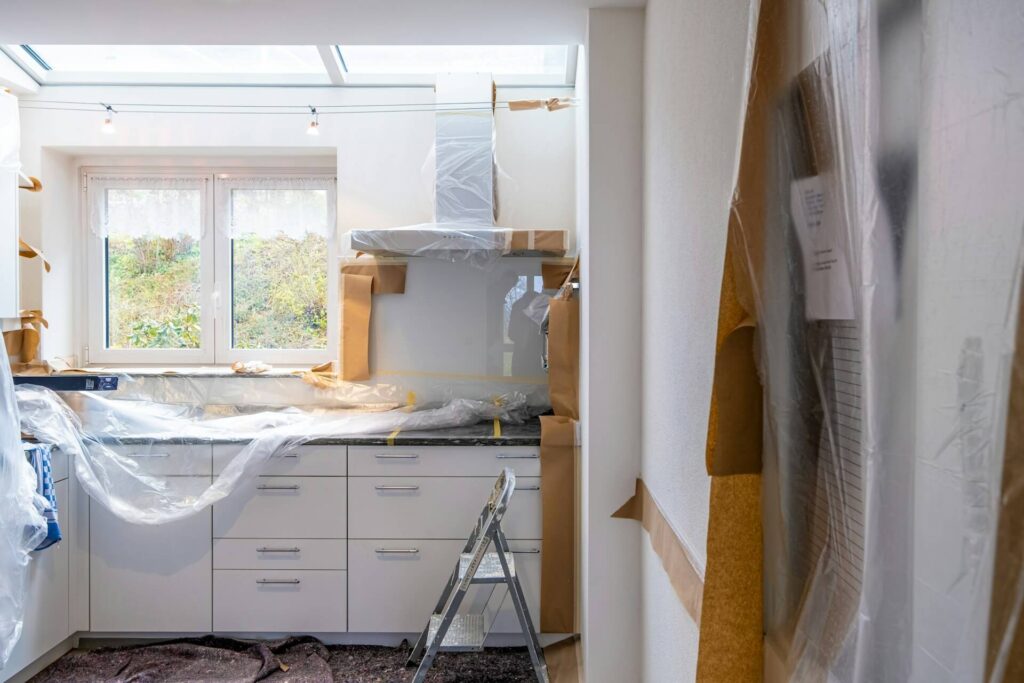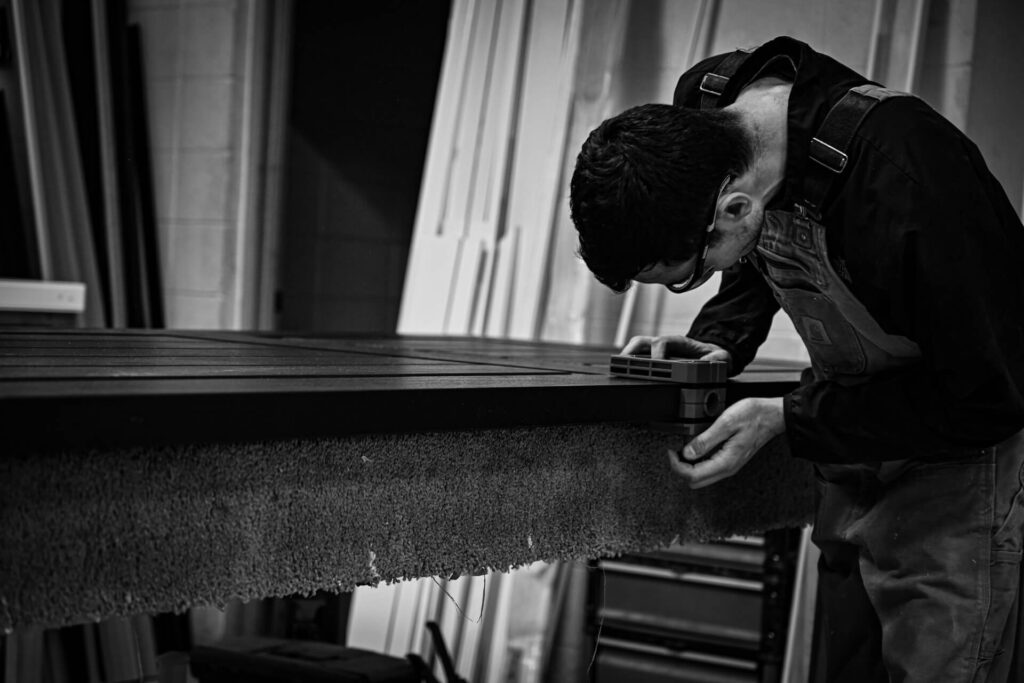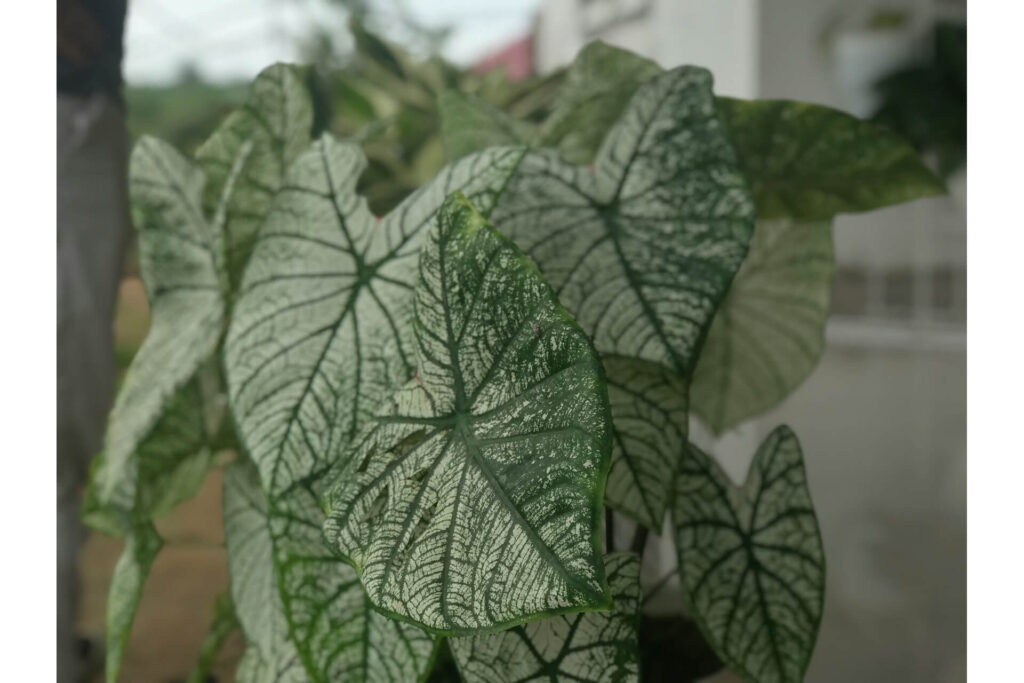
We are reader-supported. When you buy through links on our site, we may earn an affiliate commission.
As global temperatures rise and energy costs soar, homeowners and builders are seeking innovative and green solutions to enhance home comfort. One solution gaining prominence is cool roofing. Designed to reflect more sunlight and absorb more heat, cool roofs offer plenty of benefits, from reduced energy consumption to enhanced indoor comfort.
Cool Roofing: What Is It?
Cool roofs are designed to reflect more sunlight and absorb less heat than standard roofs. They achieve this through highly reflective materials, such as specialized reflective paints, sheet coverings or reflective tiles and shingles. These materials can significantly lower roof temperatures, reducing the heat transferred into buildings.
As a result, buildings with cool roofs often experience lower indoor temperatures, which can lead to reduced energy use for cooling, especially in hot climates. By mitigating the urban heat island effect, cool roofs can also contribute to cooler outdoor air temperatures in the surrounding areas.
Cool Roof Advantages
Numerous cool roof advantages make them attractive for homeowners, property developers and builders looking to improve energy efficiency and sustainability. Here are some key benefits of cool roofs:
Energy Efficiency and Cost Savings
Cool roofs can drastically reduce the need for air conditioning by keeping indoor temperatures lower. This reduction in cooling demand translates to lower energy bills, making them a cost-effective solution for both residential and commercial buildings. By opting for a white cool roof, you can reduce your cooling costs by 40%. Because cool roofs minimize the load on your heating and cooling systems, they also extend their life span.
Environmental Benefits
Cool roofs reduce greenhouse gas emissions from power plants by increasing the amount of energy required to cool a building. This contributes to a decrease in the urban heat island effect, resulting in cooler temperatures and improved air quality.
Extended Roof Life Span
Cool roofs can extend the life of roofing materials by reducing thermal expansion and contraction. Lower temperatures minimize wear and tear, leading to fewer repairs and replacements over time.
Improved Indoor Comfort
Cool roofs play a crucial role in sustainable building practices by reflecting more sunlight and absorbing less heat. They also help mitigate the impacts of climate change by reducing energy consumption and lowering carbon footprints.

Potential Rebates
Many municipalities and utility companies offer rebates and incentives for installing cool roofs. These programs help offset the initial installation costs, making investment more attractive.
Return on Investment (ROI)
Probably the most desirable cool roof advantage is its ROI. Investing in a cool roof can provide a substantial ROI through long-term savings and increased property value. Replacing outdated and energy inefficient roofs can increase your home’s value by approximately $12,000 and yield a 62.9% ROI.
Sustainability and Climate Mitigation
By reflecting more sunlight and absorbing less heat, cool roofs play a crucial role in sustainable building practices. They help mitigate the impacts of climate change by reducing energy consumption and lowering carbon footprints.
Cool Roof Disadvantages
While cool roofs offer many benefits, there are also some potential drawbacks to consider. Understanding these disadvantages can help homeowners and builders decide whether cool roofs are the right choice for their needs.
Initial Cost
The upfront cost of installing a cool roof can be higher than a traditional roof, particularly if specialized materials or coatings are required. The initial investment may deter some property owners, despite the long-term savings and benefits.
Climate Suitability
Cool roofs are most effective in hot climates, like Southern parts of the U.S., where cooling needs are significant. In cooler climates, the reflective properties of cool roofs can lead to higher heating costs in the winter, as they prevent heat absorption that could otherwise help warm the building.
Aesthetic Considerations
Some cool roofing materials may have limited color options, which can impact a building’s aesthetic appeal. Property owners who prioritize appearance may find these limitations restrictive.
Coating Durability
The reflective coatings used on cool roofs can degrade over time due to weather exposure, UV radiation and environmental pollutants. This degradation can reduce the roof’s effectiveness and may require periodic reapplication to maintain performance.
Potential Glare Issues
Highly reflective cool roofs can create glare, which may be problematic for nearby buildings or pedestrians. This is particularly a concern in urban areas where buildings are close together.
Installation Complexity
Installing a cool roof can be more complex than a traditional roof, particularly if retrofitting an existing building. This complexity can lead to longer installation times and potentially higher labor costs.

Types of Cool Roofing Materials
Cool roofing materials come in various forms, each offering unique benefits and suitability for different applications. Here are some of the most common types of cool roofing materials:
Cool Roof Coatings
These are white or reflective coatings applied to existing roofs. They’re typically made from acrylic, silicone or urethane, which are liquids that dry to form a solid, reflective layer. Cool roof coatings are a cost-effective way to convert an existing roof into a cool roof.
Reflective Shingles
Reflective or cool shingles are similar in appearance to traditional asphalt shingles. Still, they are designed with specially coated granules that reflect more sunlight. These shingles come in various colors and styles, balancing aesthetic appeal and energy efficiency.
Single-Ply Membranes
These roofing materials are made from sheets of synthetic materials like TPO (thermoplastic olefin), PVC (polyvinyl chloride) or EPDM (ethylene propylene diene terpolymer). Single-ply membranes are typically white or light-colored to maximize reflexivity and are commonly used in commercial roofing applications.
Tile Roofs
Clay, concrete and slate tiles often have reflective properties. These tiles are naturally durable, resistant to heavy winds and are available in lighter colors or with reflective coatings to reflect sunlight. Tile roofs are common in residential areas and are great for a traditional or Mediterranean look.
Metal Roofs
Metal roofing materials, such as aluminum, steel, and copper, can be coated with reflective paint or have natural reflective properties. They are incredibly durable and long-lasting and available in various styles and colors to match your home. Metal roofs are great for reflecting solar radiation and can also boost a building’s energy efficiency.
Built-Up Roofing (BUR) and Modified Bitumen
These roofing systems, commonly used on flat or low-slope roofs, can be enhanced with reflective coatings or surfaces. Built-up roofs consist of multiple layers of asphalt and reinforcing materials, while modified bitumen roofs are made from a combination of asphalt and plastic or rubber modifiers. Reflective surfacing materials can improve their ability to reflect sunlight.

Constructing for a Greener Future
Cool roofing offers a promising innovation for green solutions. It can lower energy costs, extend the life span of roofing materials and mitigate the urban heat island effect. Despite some challenges, such as initial costs and climate suitability, the long-term advantages of cool roofs make them an attractive option for homeowners and builders.







